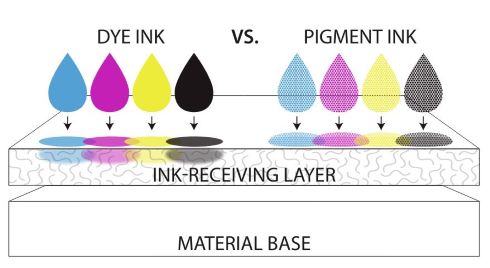
Dye and pigment inks are the two primary types of inks used in inkjet label printers. Some printers will use solely dye ink, others will use solely pigment ink and some will have the option to use either dye or pigment. In this blog we outline the key differences between the two inks.
Composition
- Dye inks consist of a colour substance that dissolves in a liquid solvent.
- Pigment inks consist of tiny solid colour particles suspended in a liquid carrier
Color Vibrancy
- Dye inks typically produce more vibrant and saturated printed colors due to their ability to fully dissolve in the liquid carrier.
- Pigment inks tend to produce more muted colors compared to dye inks. While they may not be as vibrant, pigment inks often offer better color longevity and resistance to fading, especially when exposed to UV light.
Water Resistance
- Dye inks are generally less water-resistant compared to pigment inks. Dye inks can be more susceptible to smudging when they come into contact with water.
- Pigment inks offer greater water resistance and are more suitable for applications where printed materials may be exposed to water or moisture, such as labels used on refrigerated products.
Fade Resistance
- Dye inks are more likely to fade over time, especially when exposed to UV light, leading to a gradual loss of color intensity and image quality. Generally dye inks are recommended for indoor use on products that will be consumed in less than a year.
- Pigment inks typically provide better fade resistance compared to dye inks. The solid pigment particles are more resistant to degradation from exposure to light, heat, and environmental factors, resulting in longer-lasting prints.
Media Compatibility
- Dye inks are often preferred for printing on glossy or coated papers due to their ability to create sharp, vibrant images with high contrast.
- Pigment inks are more versatile and can be used on a wider range of media, including plain paper, matte paper, and specialty label materials, thanks to their ability to adhere to surfaces more effectively.
In summary, dye inks are known for producing vibrant colour prints while pigment inks offer superior water and fade resistance, making them ideal for durable labels. The choice between dye and pigment inks depends on factors such as colour vibrancy, durability, and the application requirements of the printed labels.